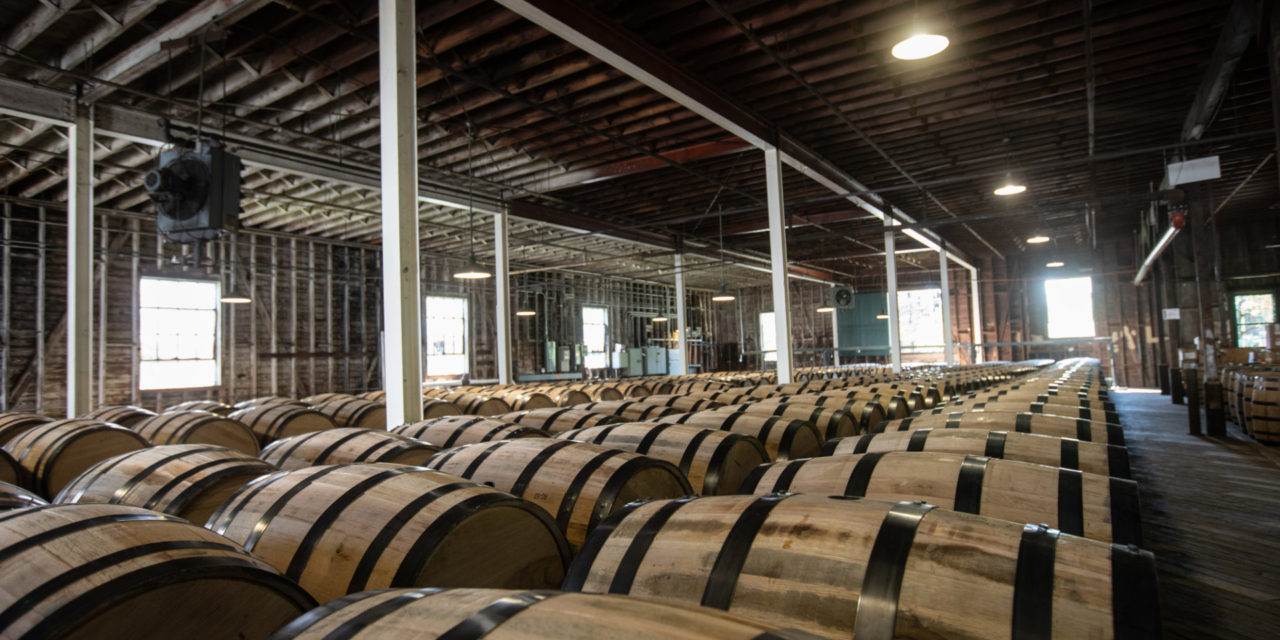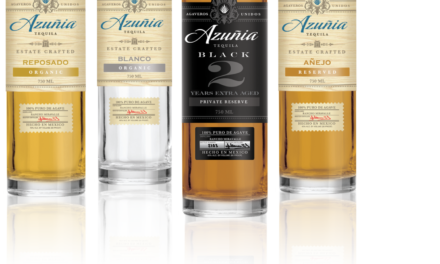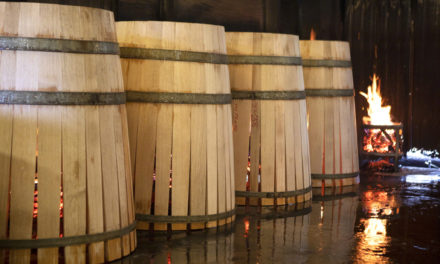Personal experience and anecdotal evidence have taught generations of distillers that the environment around a barrel impacts how its contents age. With the advent of ever-more-precise methods of measuring and tracking temperature, humidity, and other indicators, that understanding has become even more sophisticated. Now, many producers are leveraging that knowledge to control the environment to their advantage, rather than simply settling for the natural climate of their region. Here’s how three American whiskey producers are tinkering with the thermostat to fine-tune an environment that gets the most oomph out of every barrel.

“For every year we heat cycle, we feel we get an extra six months of maturing quality in the product.” —Andrea Wilson, Michter’s Distillery
Highs and Lows
Just like human beings who’d rather snuggle up on the sofa on snow days, whiskey has trouble getting going when it’s cold out. The action really starts when the weather heats up. As it gets hotter, the whiskey expands, seeping into the pores of the barrels and reacting with the oak to extract color, character, and aroma. When the whiskey cools in the winter, it shrinks, letting the whiskey flow back out of the wood along with all those extracted compounds from the barrel. In maturation parlance, that swing from cold to hot is called a “heat cycle,” and without it, it takes much longer for whiskey to develop sweet, oaky flavors.
Kentucky distillers have long been aware of the importance of heat cycles for aging bourbon and rye. “Kentucky’s climate naturally produces several cycles a year just naturally,” says Andrea Wilson, master of maturation at Michter’s Distillery in Shively, Ky., “but we’re trying to increase the number of those cycles to increase the maturing quality of the product.”
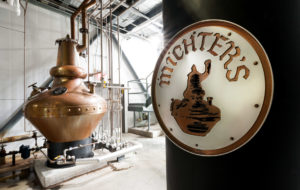 During the winter, all of Michter’s warehouses are heat cycled. That means they’re gradually heated to a liquid set point temperature, then allowed to naturally cool down, with the process repeated several times over the course of the cold season. Wilson says this creates more interaction between the whiskey and the wood than would occur if the warehouse were kept at ambient temperature. The result is deeper, richer flavor. “For every year we heat cycle, we feel we get an extra six months of maturing quality in the product,” says Wilson.
During the winter, all of Michter’s warehouses are heat cycled. That means they’re gradually heated to a liquid set point temperature, then allowed to naturally cool down, with the process repeated several times over the course of the cold season. Wilson says this creates more interaction between the whiskey and the wood than would occur if the warehouse were kept at ambient temperature. The result is deeper, richer flavor. “For every year we heat cycle, we feel we get an extra six months of maturing quality in the product,” says Wilson.
She cautions that heat cycling demands high-quality casks, since they impart a lot of flavor to the final product. To that end, Michter’s opts for barrels made from at least 18-month naturally air-dried and seasoned staves that have been toasted as well as charred, creating the right character in its finished whiskey.
Some Like it Hot
Seattle, Wash., isn’t known for its balmy climate, but the single malt made at the city’s Copperworks Distillery spends its formative years basking in a comfy warehouse heated to a steady 70°F.
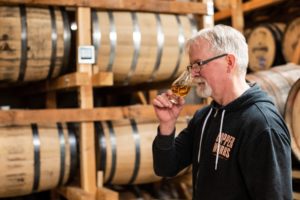
“In warmer barrels, flavors traditionally associated with long maturation are developed sooner.” —Jason Parker, Copperworks Distillery
“Folks in Kentucky are always going to tell you about the importance of having temperature changes,” says Jason Parker, president and co-founder of Copperworks Distillery. “They’ll say it’s necessary for their traditional products—and they’re right. But for the nontraditional products we’re making, and because of the flavors we’ve developed in our brewing process, we actually don’t want changes in temperature. We want consistent warm temperatures.”
Heat cycling accelerates the extractive elements of maturation through simple mechanics. But that’s not the only facet of maturation. There are also chemical reactions taking place that don’t necessarily involve whiskey-wood interaction, and most chemical reactions happen faster at higher temperatures. By keeping the temperature warm and steady, Copperworks is able to moderate the extractive part of maturation while accelerating the continuous chemical reactions that happen in the spirit.
The result is a distinctive flavor profile that’s different from either traditional Scottish single malt or American bourbon. “In warmer barrels, flavors traditionally associated with long maturation are developed sooner,” says Parker. He says Copperworks’ single malt takes on flavors like dried fruit, leather, tobacco, dark chocolate, and coffee after just three or three-and-a-half years of aging, rather than the decade or more that might be required in Scotland. “If you’ve ever had Kavalan whisky from Taiwan, where their warehouses experience extremely hot temperatures all year round” says Parker, “then you’ve tasted what I’m talking about.”
The Future of Aging
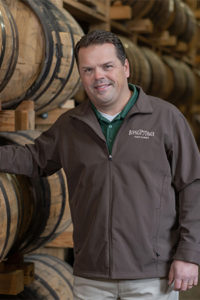
“All of our warehouses are temperature controlled, but only heated. We have no artificial cooling, other than window circulation.” —Harlen Wheatley, Buffalo Trace
It’s not just new producers embracing the transformative potential of temperature control. Buffalo Trace Distillery in Frankfort, Ky., has been steam heating its warehouses since 1886. Today, more than 130 years later, it’s still on the vanguard of exploring how temperature and other climatic factors influence maturation at its Warehouse X, an experimental warehouse built in 2013. Warehouse X is designed as a laboratory for maturation, complete with four independent, climate-controlled chambers, as well as a breezeway exposed to natural outdoor temperatures acting as a control.
In November 2019, Buffalo Trace concluded a three-year trial in Warehouse X measuring the impact of temperature on maturation. During the experiment, each chamber was exposed to different temperature conditions. Two chambers were set at constant temperatures: one at 75°F, and the other at 63°F. The other two were set to track the outside temperature, with one floating 20°F higher than the outside and the other floating 20°F below.
Over the course of the experiment, Buffalo Trace collected 9.1 million data points using sophisticated probes to measure all aspects of the environment and aging process, including pressure inside the barrels and the color, extractives, and flavor of the maturing whiskey. Next, the barrels will be rolled into a standard Buffalo Trace warehouse for continued aging, monitoring, and sensory evaluation.
What story do those data points tell so far? “Much of the information is too early to draw conclusions or share,” cautions Buffalo Trace master distiller Harlen Wheatley. However, the distillery does report that color, proof, and oak extracts varied depending on the temperature in each chamber, and that the higher the temperature, the higher the pressure inside the barrel. “Our findings are mostly proving out hypotheses and theories that have been long-standing in the industry,” says Wheatley.
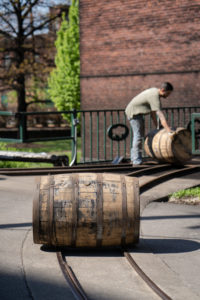
[Photo courtesy Buffalo Trace]
In the meantime, Buffalo Trace already clearly believes that warmer temperatures make for better whiskey. “All of our warehouses are temperature controlled, but only heated,” explains Wheatley. “We have no artificial cooling, other than window circulation.” By heating its warehouses during winter, Buffalo Trace says it gains approximately two extra months of aging per year compared to non-climate-controlled warehouses.
Alas, there’s a downside: “It is very expensive,” says Wheatley. Still, like a growing number of American producers, Buffalo Trace seems to think the benefit of boosted maturation is well worth the extra heating bill.

